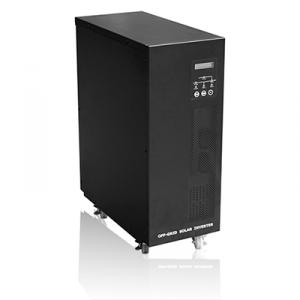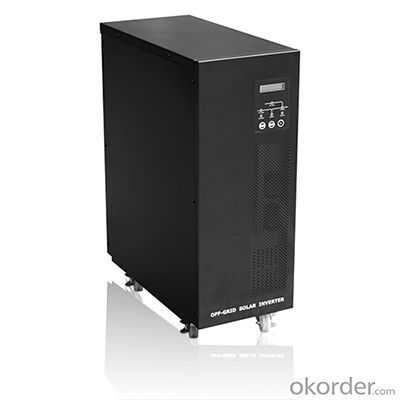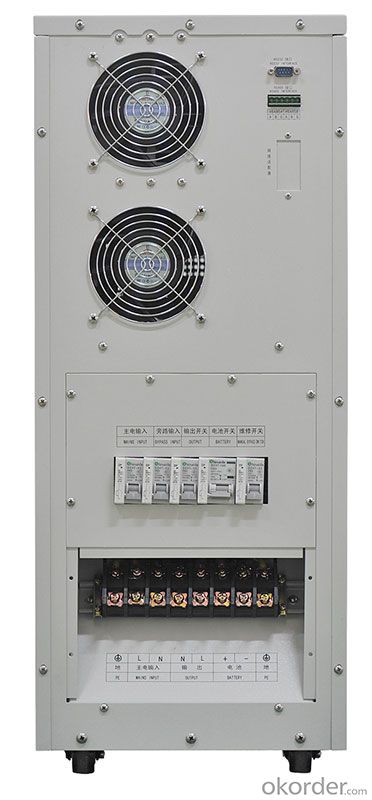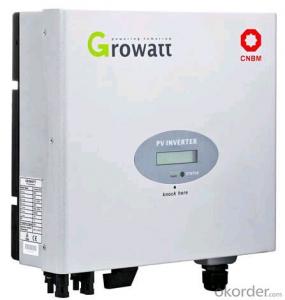Solar Inverter Perth - Off-grid Solar Inverter 3kw-8kw CE Approved AAA Quality with Best Price
- Loading Port:
- China main port
- Payment Terms:
- TT or LC
- Min Order Qty:
- 1 pc
- Supply Capability:
- 1000 pc/month
OKorder Service Pledge
OKorder Financial Service
You Might Also Like
Off-Grid Solar Inverter 3KW-8KW
EA-GF series products are on the basis of green energy use and equipment electricity need for remote area, combing the electricity characteristics of household appliances, communication station equipment and computer peripheral equipment. They have the function of energy conservation and environment protection. They adopt MCU control technique, having various kinds of function such as multi-setting mode, MPPT control, voltage stabilization on line, short-circuit protection, inverter frequency adaptive, output overload, battery charging management, monitoring etc. With display of LCD and LED, all the parameters and running status could be visible. Intelligent monitor is available via RS232 &USB connecting with PC, while remote control via RS485 &SNMP. EA-GF series products are the ideal power supply delivered with excellent performance, high stability, high reliability and high practical applicability
● Multi-setting
※PV priority mode or AC priority mode
※Choose the charging current based on the configured capacity of the battery
● High reliability: Double MCU digital control
※Independent MPPT (Maximum Power Point Tracking) control microprocessor system
※Independent inverter microprocessor control system
● Isolated and pure sine wave technology
● LCD+LED display
● Wide input range
● High-speed synchronous conversion
● Friendly alarm system
● Online protection function
● Frequency auto adaptive
● Intelligent No-load auto shutdown technology (optional)
● Intelligent monitoring (RS232, USB, or SNMP card, optional)
Model | GF3000 | GF4000 | GF3000 | GF5000 | GF6000 | GF8000 |
Power | 3KW | 4KW | 3KW | 5KW | 6KW | 8KW |
Battery Voltage | 96Vdc | 192Vdc | ||||
Working Mode | PV priority / AC priority optional | |||||
PV | ||||||
MPPT Voltage Range | 96Vdc - 200Vdc | 192Vdc - 400Vdc | ||||
Max. Charge Current | 10-60A | 10-40A | 10-60A | |||
PV Panels Configuration(Suggestion)(Vmp) | 120-142Vdc | 240-284Vdc | ||||
PV Panels Configuration(Suggestion)(Imp) | ≤60A | ≤40A | ≤60A | |||
Conversion Efficiency | ≥ 98 % | |||||
Display | ||||||
Panel Indicator | LCD+LED Panel display | |||||
AC Mode | ||||||
Input Voltage Range | 165Vac- 275Vac | |||||
Input Frequency Range | 40-70 Hz (auto transfer to battery mode, if beyond this range) | |||||
Output Voltage Precision | 220Vac± 5% | |||||
Input Power Factor | ≥0.8 | |||||
Max. Efficiency | 88% (inverter on) | |||||
Overload | 110% transfer to bypass in 255s,120% go to bypass in 60s, 150% go to bypass in 10s. | |||||
Max. Charging Current | 8A | 12A | ||||
Short Circuit Protection | Electronic limited current output or turn bypass, air breaker protection | |||||
Inverter Mode | ||||||
Output Voltage | 220Vac± 5% | |||||
Output Frequency | 50 Hz / 60Hz ± 1% Frequency self-adjusted | |||||
Output Power Factor | 1 | |||||
Distortion | ≤ 5% Linear load | |||||
PV-AC Transfer Time | 0ms | |||||
Max.Efficiency | ≥92% | |||||
Overload | 110% transfer to bypass, in 255s or shut down,120% go to bypass or shut down in 60s, 150% go to bypass or shut down in 10s. | |||||
Eco Mode(Optional) | When Load < 5%, system will turn to bypass power supply (utility) in 1min | |||||
Short Circuit | Electronic limited current output, turn the bypass or system to be automatic shutdown | |||||
Alarm | ||||||
AC Fails | 1/4s; automatic sound elimination after 40s | |||||
Battery Low Voltage | 5/1s | |||||
Overload | 1/1s | |||||
Communication (Optional) | ||||||
Communication Interface | RS232 / USB / RS485 / SNMP | |||||
Dry Contact | PV failure、battery low-voltage、overload、bypass、inverter failure、 remote start generator dry contact signal | |||||
Others | ||||||
Output Connection | Terminal blocks | |||||
Surge Protection | Optional | |||||
EMC | Accord with EN62040-2:2006;EN61000-3-2:2006; EN61000-3-3:2008 | |||||
IP Class | IP20 | |||||
Ambient Temperature | 0℃ ~ 40℃ | |||||
Ambient Humidity | 10% ~ 90%(Non Condensed) | |||||
Noise | ≤ 50dB | |||||
Working Altitude | 2000m (Every 100m increase derating 1%) | |||||
Dimension (WxDxH)mm | 560×265×725 | |||||
Packing Dimension (WxDxH)mm | 662×360×905 | |||||
Weight(kg) | 76 | 80 | 60 | 67 | 69 | 85 |
Packing Weight(kg) | 85 | 89 | 69 | 76 | 78 | 94 |
· Q. What is an UPS and What it is for ?
An uninterruptible power supply (UPS) is a device that allows your computer or telephone switch or critical equipement to keep running for at least a short time or longer time when the primary power source is lost. It also provides protection from power surges, spikes, brownouts, interference and other unwanted problems on the supported equipment.
· Q. How long the UPS to run when power goes?
This can take 3 paths.
1.You can pick a UPS that is rated for pretty much the full VA you need so it will be running at 100% of capability and will thus last 'n' minutes.
2.You can pick a UPS that is rated at a much higher VA value than you really need so, for example, is running at 50% of capability and will thus last for longer than the UPS from option 1.
3.You can use extra external battery packs to run for longer. If charging capability allows, the more and the bigger batteries you take with, the longer time UPS runs.
or using a generator after about 6 hours, it will be more cost-effective, with a short runtime UPS to bridge the generator start-up gap.
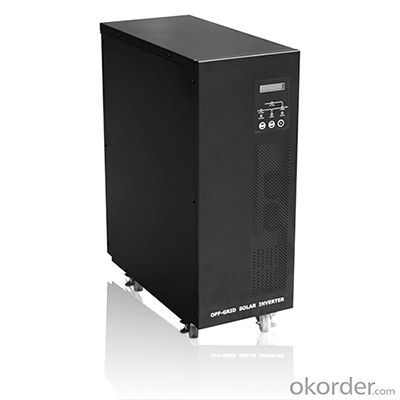

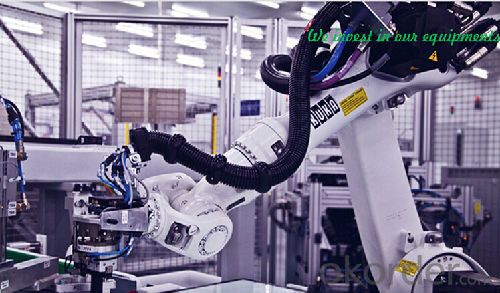

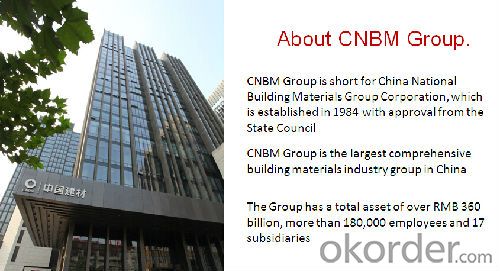

- Q: Can a solar inverter be used in grid-tied systems?
- Yes, a solar inverter can be used in grid-tied systems. In fact, a solar inverter is an essential component of a grid-tied system as it converts the direct current (DC) produced by the solar panels into alternating current (AC) that can be fed into the electrical grid. This allows for the efficient utilization of solar energy and enables homeowners or businesses to offset their electricity consumption with solar power, potentially even earning credits for excess energy produced.
- Q: Is it possible to monitor the performance of a solar inverter remotely?
- Yes, it is possible to monitor the performance of a solar inverter remotely. Many modern solar inverters come with built-in data monitoring capabilities that allow users to track and analyze the system's performance from anywhere with an internet connection. Through web-based interfaces or smartphone applications, users can view real-time data, such as energy production, power output, and system status, as well as historical data and performance trends. Remote monitoring helps identify any issues or anomalies, optimize system performance, and ensure efficient operation of the solar inverter.
- Q: Can a solar inverter be used with a solar-powered remote monitoring system?
- Yes, a solar inverter can be used with a solar-powered remote monitoring system. The solar inverter is responsible for converting the direct current (DC) generated by the solar panels into alternating current (AC) that can be used to power various devices, including the remote monitoring system. This allows the remote monitoring system to be powered by the solar panels and ensures that it operates efficiently.
- Q: How do you monitor the performance of a solar inverter?
- To monitor the performance of a solar inverter, several methods can be employed. Firstly, real-time monitoring of key parameters such as voltage, current, and power output can be done using specialized monitoring devices or software. These tools provide a comprehensive overview of the inverter's performance, allowing for immediate identification of any issues or deviations from expected performance. Additionally, regular inspection and maintenance checks are crucial for performance monitoring. This involves visually inspecting the inverter for any physical damage or abnormalities, as well as checking the connections and wiring. Any signs of wear or malfunction should be promptly addressed to ensure optimal performance. Furthermore, data logging and analysis play a vital role in monitoring the inverter's performance over time. By collecting and analyzing historical data, trends and patterns can be identified, helping to detect potential issues or performance degradation. This can be done using software platforms that track and analyze the data from the inverter. Overall, a combination of real-time monitoring, regular inspections, and data analysis allows for effective performance monitoring of solar inverters, ensuring their optimal functioning and addressing any performance issues promptly.
- Q: What is the role of power ramp rate control in a solar inverter?
- The role of power ramp rate control in a solar inverter is to regulate the rate at which the power output of the solar system increases or decreases. This control is important to ensure the stability and reliability of the grid, as sudden changes in power generation can cause disruptions. By gradually ramping up or down the power output, the solar inverter can respond to grid conditions and prevent overloading or underutilization of the system, ultimately improving the overall performance and efficiency of the solar installation.
- Q: Can a solar inverter be used in regions with high levels of electromagnetic interference?
- Yes, a solar inverter can be used in regions with high levels of electromagnetic interference. However, it is important to ensure that the inverter is properly shielded and meets the necessary electromagnetic compatibility standards to minimize any potential disruptions or malfunctions caused by the interference.
- Q: How does a solar inverter interact with the electrical grid?
- A solar inverter interacts with the electrical grid by converting the direct current (DC) electricity generated by solar panels into alternating current (AC) electricity that is compatible with the grid. It synchronizes the generated electricity with the grid's voltage and frequency, allowing excess power to be fed back into the grid for others to use, and drawing additional power from the grid when needed. This interaction ensures efficient utilization of solar energy and seamless integration of solar power into the existing electrical grid infrastructure.
- Q: What are the main components of a solar inverter system?
- The main components of a solar inverter system include the solar panels, the inverter itself, a charge controller, batteries (if it is an off-grid system), and the electrical wiring and connections.
- Q: Can a solar inverter be used with a solar-powered electric vehicle charging station?
- Yes, a solar inverter can be used with a solar-powered electric vehicle charging station. The solar inverter converts the DC (direct current) electricity generated by the solar panels into AC (alternating current) electricity, which is required to charge an electric vehicle. By using a solar inverter, the solar-powered electric vehicle charging station can efficiently convert and deliver the electricity generated from solar panels to charge electric vehicles.
- Q: What is the role of a power factor controller in a solar inverter?
- The role of a power factor controller in a solar inverter is to regulate and optimize the power factor of the inverter's output. It ensures that the power drawn from the grid or generated by the solar panels is in sync with the voltage and current, minimizing reactive power and maximizing the efficiency of the system. By maintaining a high power factor, the power factor controller helps reduce energy losses, improve overall system performance, and comply with grid regulations.
Send your message to us
Solar Inverter Perth - Off-grid Solar Inverter 3kw-8kw CE Approved AAA Quality with Best Price
- Loading Port:
- China main port
- Payment Terms:
- TT or LC
- Min Order Qty:
- 1 pc
- Supply Capability:
- 1000 pc/month
OKorder Service Pledge
OKorder Financial Service
Similar products
Hot products
Hot Searches
Related keywords
